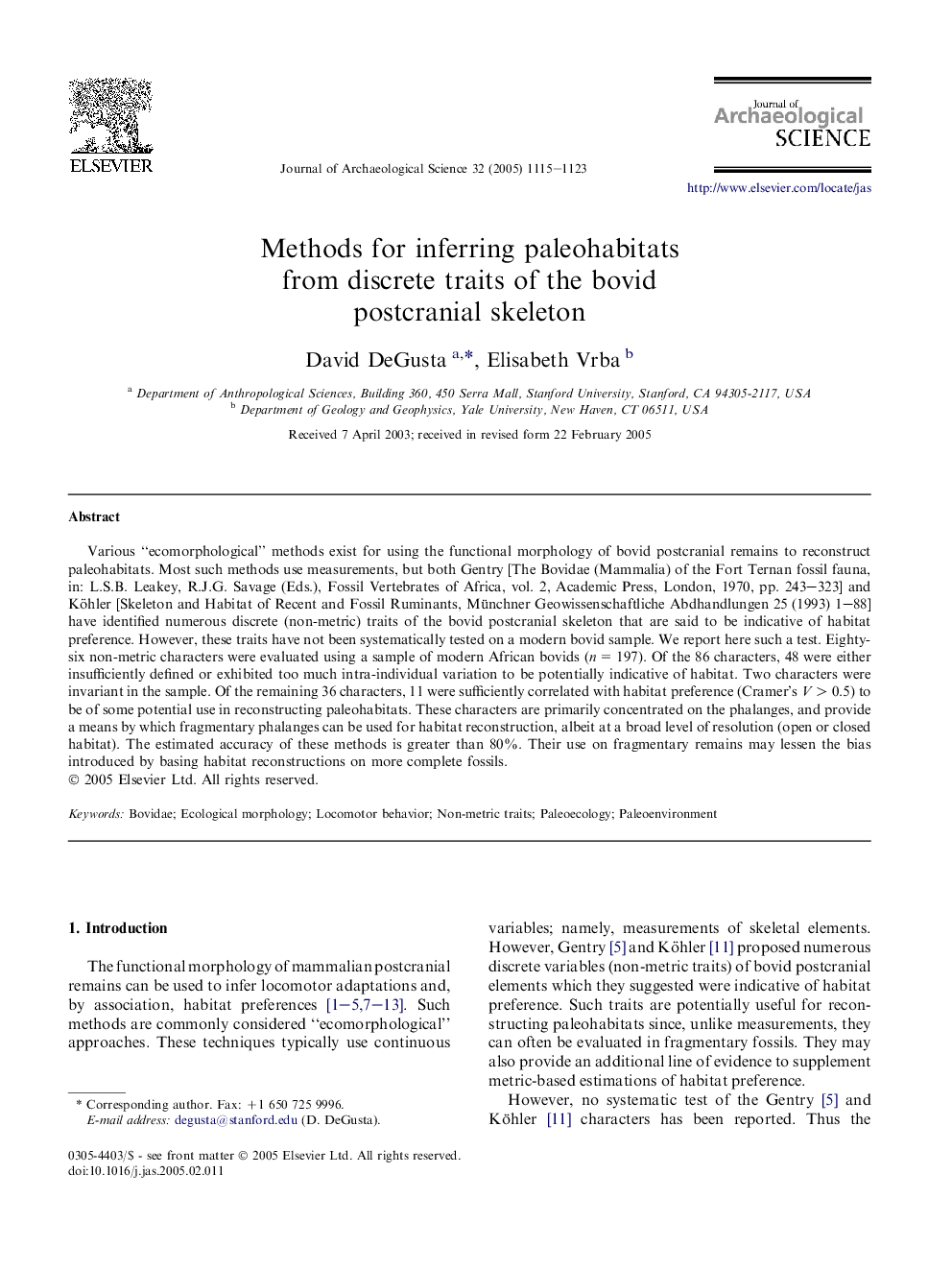| Article ID | Journal | Published Year | Pages | File Type |
|---|---|---|---|---|
| 10499449 | Journal of Archaeological Science | 2005 | 9 Pages |
Abstract
Various “ecomorphological” methods exist for using the functional morphology of bovid postcranial remains to reconstruct paleohabitats. Most such methods use measurements, but both Gentry [The Bovidae (Mammalia) of the Fort Ternan fossil fauna, in: L.S.B. Leakey, R.J.G. Savage (Eds.), Fossil Vertebrates of Africa, vol. 2, Academic Press, London, 1970, pp. 243-323] and Köhler [Skeleton and Habitat of Recent and Fossil Ruminants, Münchner Geowissenschaftliche Abdhandlungen 25 (1993) 1-88] have identified numerous discrete (non-metric) traits of the bovid postcranial skeleton that are said to be indicative of habitat preference. However, these traits have not been systematically tested on a modern bovid sample. We report here such a test. Eighty-six non-metric characters were evaluated using a sample of modern African bovids (n = 197). Of the 86 characters, 48 were either insufficiently defined or exhibited too much intra-individual variation to be potentially indicative of habitat. Two characters were invariant in the sample. Of the remaining 36 characters, 11 were sufficiently correlated with habitat preference (Cramer's V > 0.5) to be of some potential use in reconstructing paleohabitats. These characters are primarily concentrated on the phalanges, and provide a means by which fragmentary phalanges can be used for habitat reconstruction, albeit at a broad level of resolution (open or closed habitat). The estimated accuracy of these methods is greater than 80%. Their use on fragmentary remains may lessen the bias introduced by basing habitat reconstructions on more complete fossils.
Related Topics
Physical Sciences and Engineering
Materials Science
Materials Science (General)
Authors
David DeGusta, Elisabeth Vrba,
